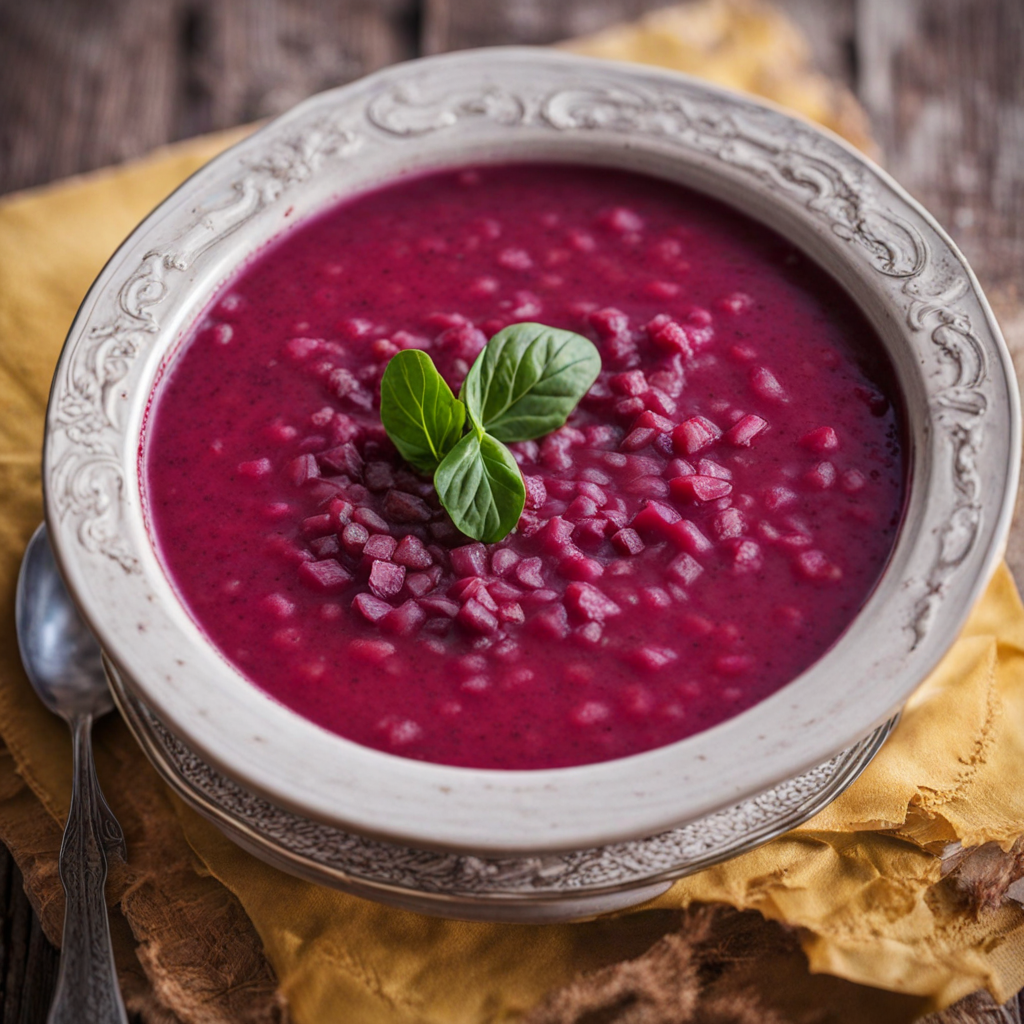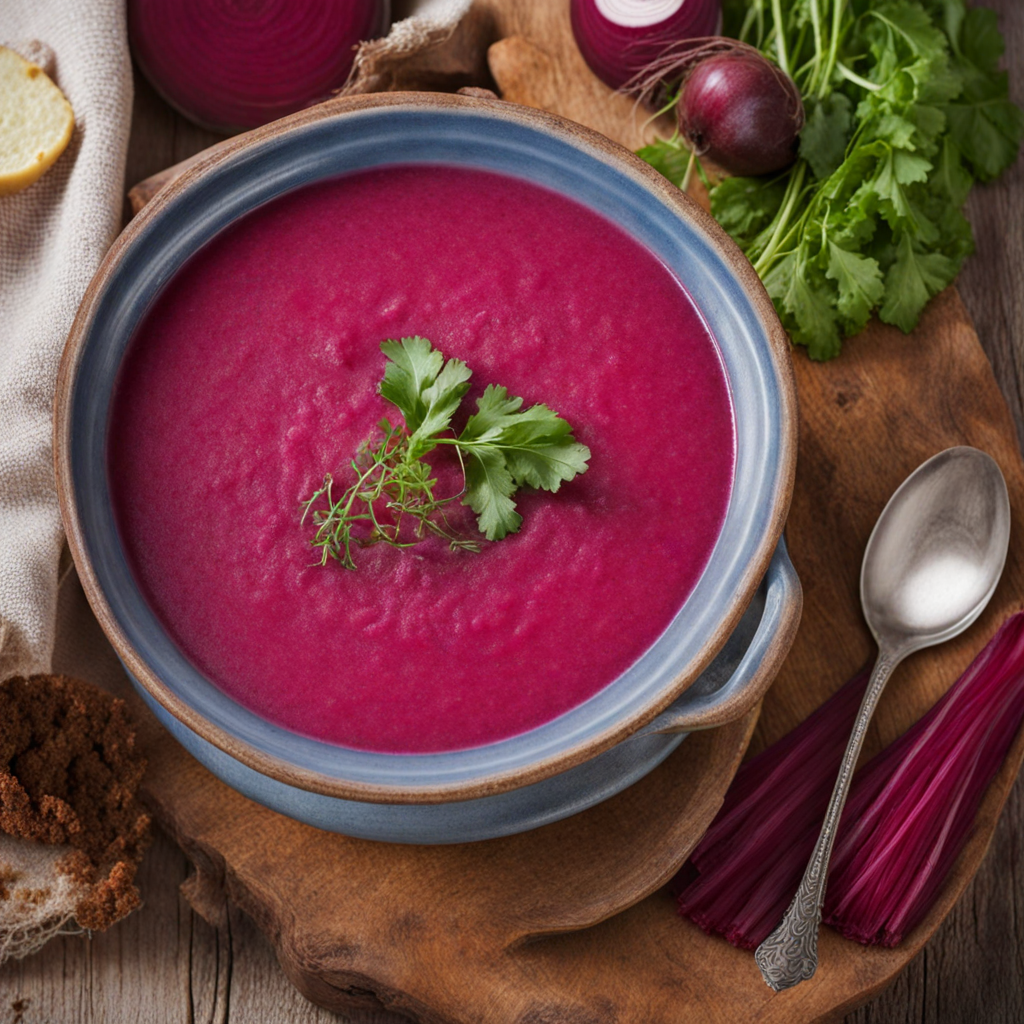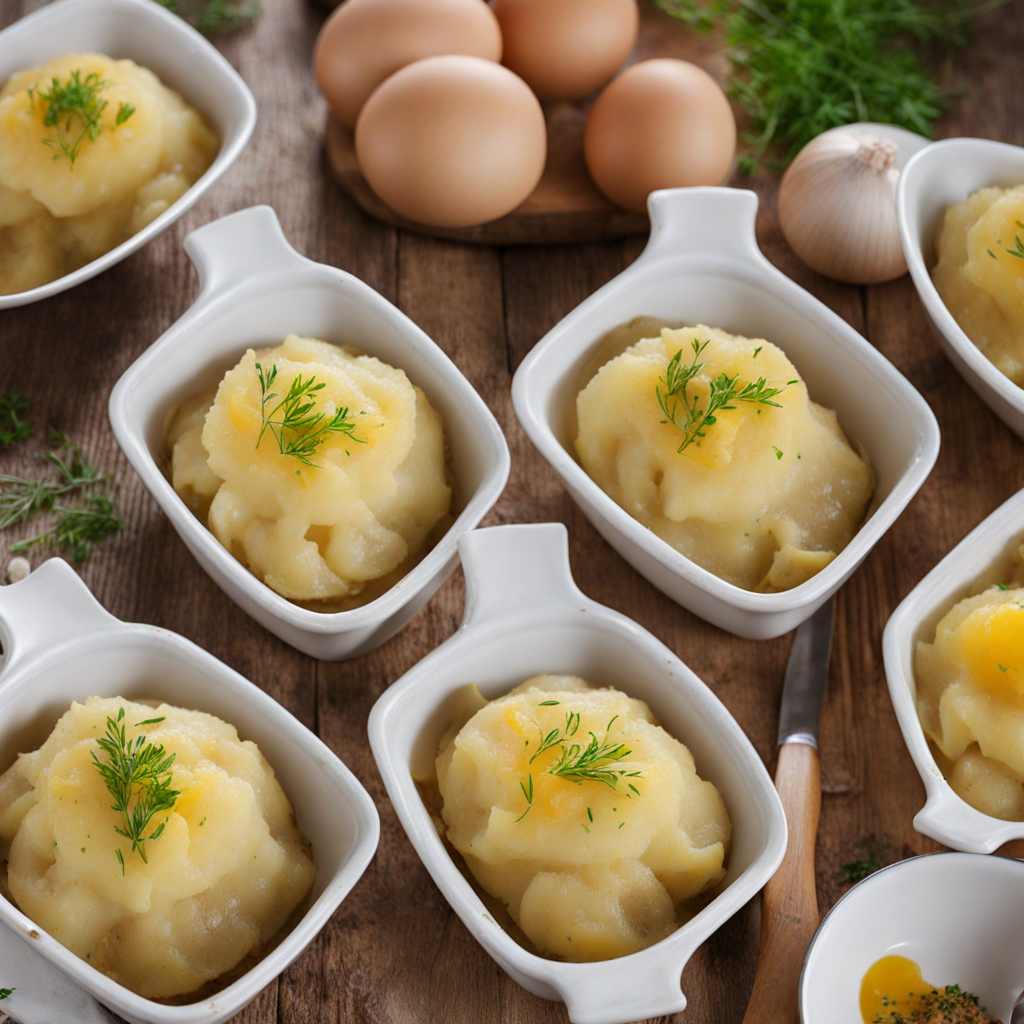Saltibarsciai
Saltibarsciai is a vibrant and refreshing cold beet soup that embodies the essence of Lithuanian cuisine. Its striking magenta color comes from the star ingredient, beets, which are cooked, grated, and then combined with a tangy buttermilk or kefir base. This delightful dish is not only visually appealing but also boasts a unique flavor profile that balances earthy sweetness from the beets with the tartness of the dairy, creating a delightful contrast that dances on the palate. The use of fresh dill and green onions adds a fragrant herbal note, enhancing its overall freshness. Traditionally served chilled, Saltibarsciai is especially popular during the warm summer months, providing a refreshing respite from the heat. The soup is often garnished with chopped hard-boiled eggs, lending a rich creaminess that complements the tangy base. Served alongside rye bread or boiled potatoes, it transforms a simple meal into an invigorating experience. Each spoonful is a celebration of texture and taste, making it a staple in Lithuanian households and a must-try for anyone exploring Eastern European cuisine. Not only is Saltibarsciai delicious, but it is also packed with nutrients, thanks to its wholesome ingredients. Beets are known for their health benefits, including improved circulation and detoxification properties. The addition of dairy products enriches the soup with probiotics, promoting gut health. This dish is not just a feast for the senses; it's an opportunity to engage with the rich culinary heritage of Lithuania, offering a taste of tradition that is both comforting and invigorating.
How It Became This Dish
Šaltibarščiai: A Chilled Delight of Lithuania Šaltibarščiai, a vibrant beetroot soup served cold, is one of the quintessential dishes of Lithuanian cuisine. Its striking magenta hue and refreshing taste make it not only a feast for the palate but also a visual delight. While it might seem like a modern culinary creation, the roots of Šaltibarščiai stretch deep into Lithuania's past, reflecting the nation’s agricultural heritage, cultural influences, and evolving food practices. Origins of Šaltibarščiai The origins of Šaltibarščiai can be traced back to the agricultural practices of the Lithuanian people, particularly in the rural regions where beets thrived. Beets have been cultivated in Eastern Europe for centuries, and their versatility in various dishes has made them a staple in many Slavic cuisines. In Lithuania, the use of beets for soups was particularly prevalent, as they provided a nutritious and filling base, especially during the colder months. The name "Šaltibarščiai" itself translates to "cold borscht," indicating its connection to the broader family of borscht soups found across Eastern Europe. The historical ties to borscht are significant, as this soup traditionally features ingredients like beets, cabbage, and potatoes, which were readily available to the Lithuanian peasantry. However, the cold version of the soup likely became popular as a refreshing summer dish, offering a reprieve from the heat. Cultural Significance Šaltibarščiai is more than just a dish; it embodies the spirit and traditions of the Lithuanian people. It is often associated with summertime, especially during the warm months when fresh vegetables are abundant. The soup is a staple at various celebrations and gatherings, from family meals to national holidays, symbolizing hospitality and community. In Lithuania, food plays a central role in social gatherings, and Šaltibarščiai is no exception. It is often served at festive occasions, such as Midsummer (Joninės) and Independence Day, where it represents national pride and cultural identity. The vibrant color of the soup is reminiscent of the rich landscapes of Lithuania, characterized by fields of beets and other vegetables, further linking the dish to its geographical roots. Development Over Time As with many traditional dishes, Šaltibarščiai has evolved over time. While the basic ingredients remain consistent—beets, kefir (or sour cream), cucumbers, and dill—the preparation and presentation have seen variations influenced by local tastes and culinary trends. Historically, the soup was made with ingredients that were readily available, which included fermented dairy products like buttermilk or sour cream, and fresh herbs from the garden. However, the introduction of kefir, a fermented milk drink that is popular in many Eastern European countries, provided a creamier texture and tangier flavor to the dish, enhancing its appeal. In the 20th century, as Lithuania experienced significant political and social changes, so too did its culinary landscape. The Soviet era brought about uniformity in food production, and while traditional recipes were often preserved, they were also adapted to fit the constraints of a more centralized food system. Despite these changes, Šaltibarščiai remained a beloved dish, often prepared in households as a way to maintain cultural identity in the face of external pressures. With Lithuania’s independence in the early 1990s, there was a resurgence of interest in traditional foods, and chefs began to explore and reinterpret classic dishes. This culinary renaissance led to innovative presentations of Šaltibarščiai, incorporating modern cooking techniques and aesthetics. Restaurants began to serve the soup in new forms, sometimes featuring additional elements like pickled vegetables or gourmet garnishes that elevated the traditional dish into fine dining territory. Ingredients and Preparation The traditional preparation of Šaltibarščiai involves a few simple yet essential ingredients. The star of the dish is the beetroot, which is boiled or roasted until tender and then grated or chopped. The beets are then mixed with kefir or sour cream, providing a creamy base that balances the earthiness of the beets. Fresh cucumbers, diced finely, add a refreshing crunch, while dill brings an aromatic note that brightens the flavor profile. A dash of salt, a sprinkle of black pepper, and sometimes a squeeze of lemon juice enhance the overall taste. Some variations may include hard-boiled eggs, which are often served alongside the soup for added protein. The dish is typically garnished with a sprig of dill or a slice of radish, making it visually appealing. Modern Adaptations and Global Influence In recent years, Šaltibarščiai has gained popularity beyond Lithuania’s borders, becoming a symbol of Lithuanian cuisine in international culinary scenes. The dish has been embraced by food enthusiasts and chefs around the world, often appearing on menus in fusion restaurants that celebrate Eastern European flavors. The rise of the farm-to-table movement has also contributed to the resurgence of Šaltibarščiai, as chefs emphasize the importance of fresh, local ingredients. The soup is often made with organic beets and locally sourced dairy, reflecting a commitment to sustainability and quality. Moreover, the popularity of healthy eating has brought Šaltibarščiai into the spotlight as a nutritious option. With its low calorie count and high nutrient density, the dish aligns well with contemporary dietary trends that prioritize fresh vegetables and fermented foods. Conclusion Šaltibarščiai is a dish that encapsulates the historical, cultural, and culinary journey of Lithuania. From its humble agricultural beginnings to its status as a celebrated symbol of national identity, this cold beet soup offers a glimpse into the heart of Lithuanian cuisine. Its vibrant color and refreshing taste make it a beloved favorite, not just in Lithuania, but increasingly around the globe. As culinary boundaries continue to blur, Šaltibarščiai stands as a testament to the enduring legacy of traditional foods and their ability to adapt and thrive in a modern context. Whether enjoyed at a summer picnic or in a fine dining setting, Šaltibarščiai remains a delicious reminder of Lithuania’s rich gastronomic heritage.
You may like
Discover local flavors from Lithuania







